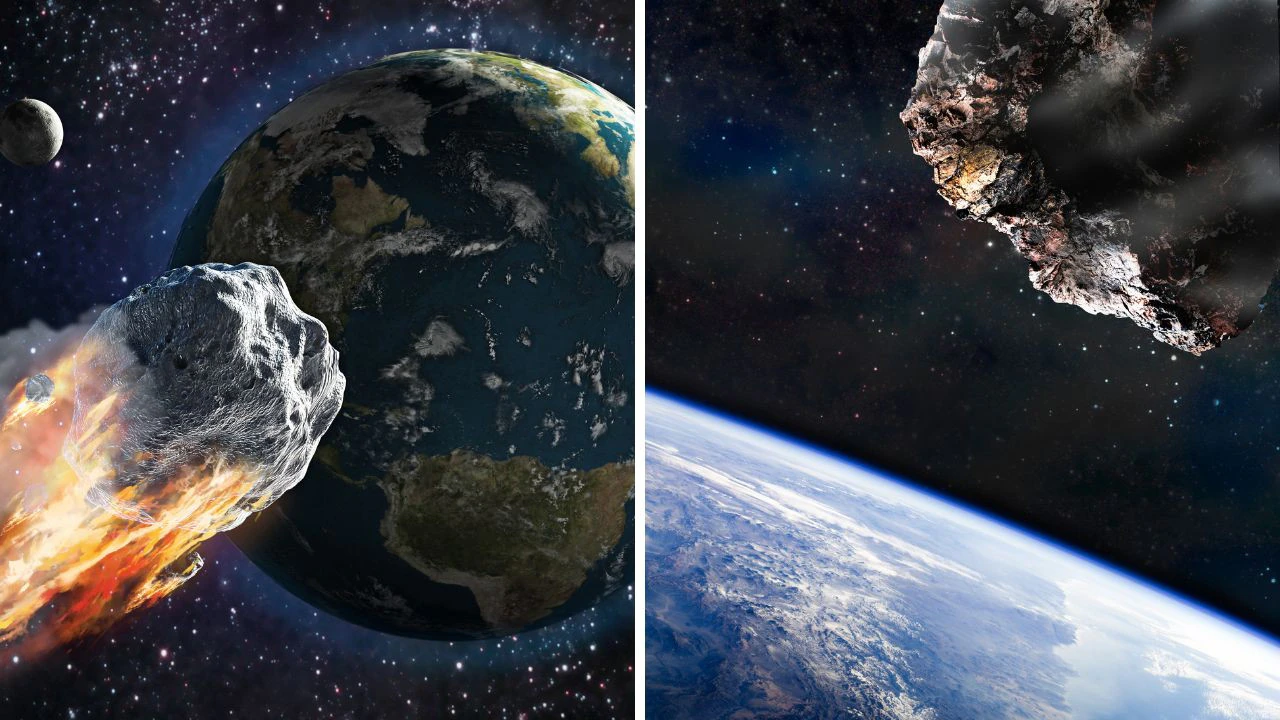By Miranda Wang
Copyright news

“Our study shows that there’s a population of potentially dangerous asteroids that we can’t detect with current telescopes,” Valerio Carruba, an astronomer at the UNESP School of Engineering said. “Instead, they’re much closer, in resonance with Venus.
“But they’re so difficult to observe that they remain invisible, even though they may pose a real risk of collision with our planet in the distant future.”
For all the latest science and technology news — download the news.com.au app direct to your phone.
The scientists used computer modelling and numerical simulations to estimate the size of the threat these asteroids pose to Earth. Their findings were published in the journal Astronomy & Astrophysics.
They found that the asteroids are positioned closer to the centre of the solar system than we are. When looking toward the sun to observe them, their visibility is drowned out by sunlight, making them almost impossible to see.
Asteroids that share an orbit with a planet are not unusual. For instance, NASA’s Lucy spacecraft is currently exploring a record-breaking number of asteroids that share an orbit around the sun with Jupiter.
But unlike Jupiter’s stable asteroids, the invisible ones orbiting Venus are unpredictable. They switch orbital configurations, or eccentricities, roughly every 12,000 years.
It’s during these transition phases that they can reach extremely close to Earth’s orbit, and even “potentially cross it.”
“Asteroids about 300 meters in diameter, which could form craters 3 to 4.5 kilometres wide and release energy equivalent to hundreds of megatons, may be hidden in this population,” says Carruba.
“An impact in a densely populated area would cause large-scale devastation.”
Currently, there are about twenty known asteroids orbiting Venus, most with eccentricities exceeding 0.38.
Eccentricity is the measure of how circular an orbit is. An eccentricity of 0 means the orbit is a perfect circle, and the higher the eccentricity, the more elongated it is. Earth’s orbit has an eccentricity of 0.017, nearly perfectly circular.
The high eccentricities of Venus’s known co-orbitals take them farther from the Sun, making them visible to telescopes.
Carruba’s results revealed that the invisible asteroids with eccentricities below 0.38 are the ones that could pose a threat to Earth.
The researchers examined whether they could be detected with the Vera Rubin Observatory’s Large Synoptic Survey Telescope in Chile, but even under ideal conditions, the chances were slim.
“Such asteroids can remain invisible for months or years and appear for only a few days under very specific conditions. This makes them effectively undetectable with Vera Rubin’s regular programs,” Carruba said.
Another potential possibility is using space telescopes, like NASA’s Near-Earth Object (NEO) Surveyor, which will be the first space telescope designed specifically to find asteroids and comets that pose a risk to Earth. NASA hopes to launch in September 2027 at the earliest.
Until then, the planetary blind spot highlights another concern: if we can’t yet detect or study these asteroids, there may be many more dangers we’re unaware of.
“Planetary defence needs to consider not only what we can see, but also what we can’t,” Carruba said.